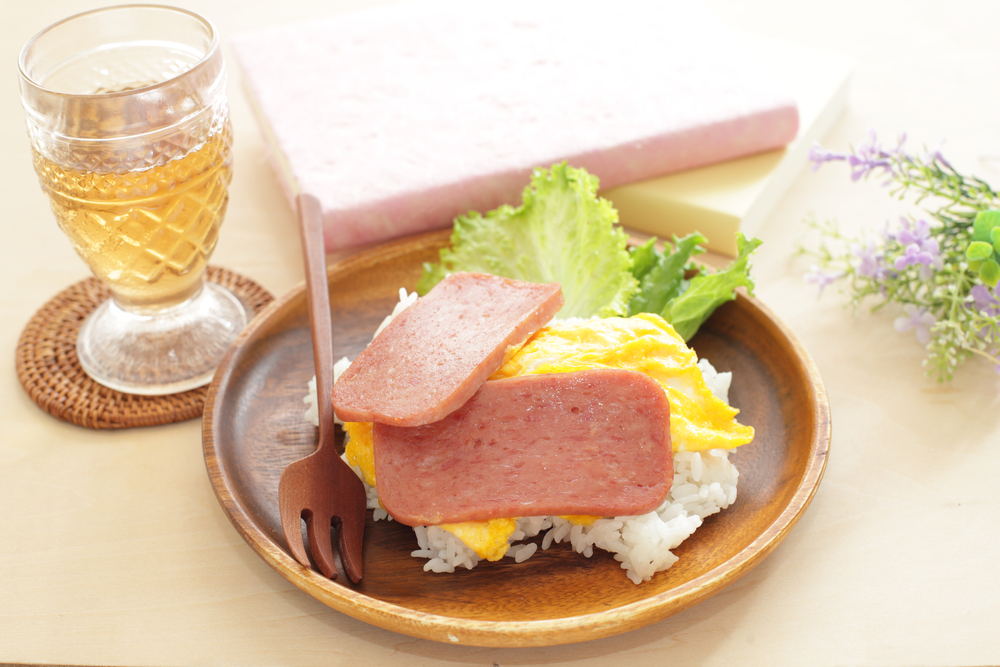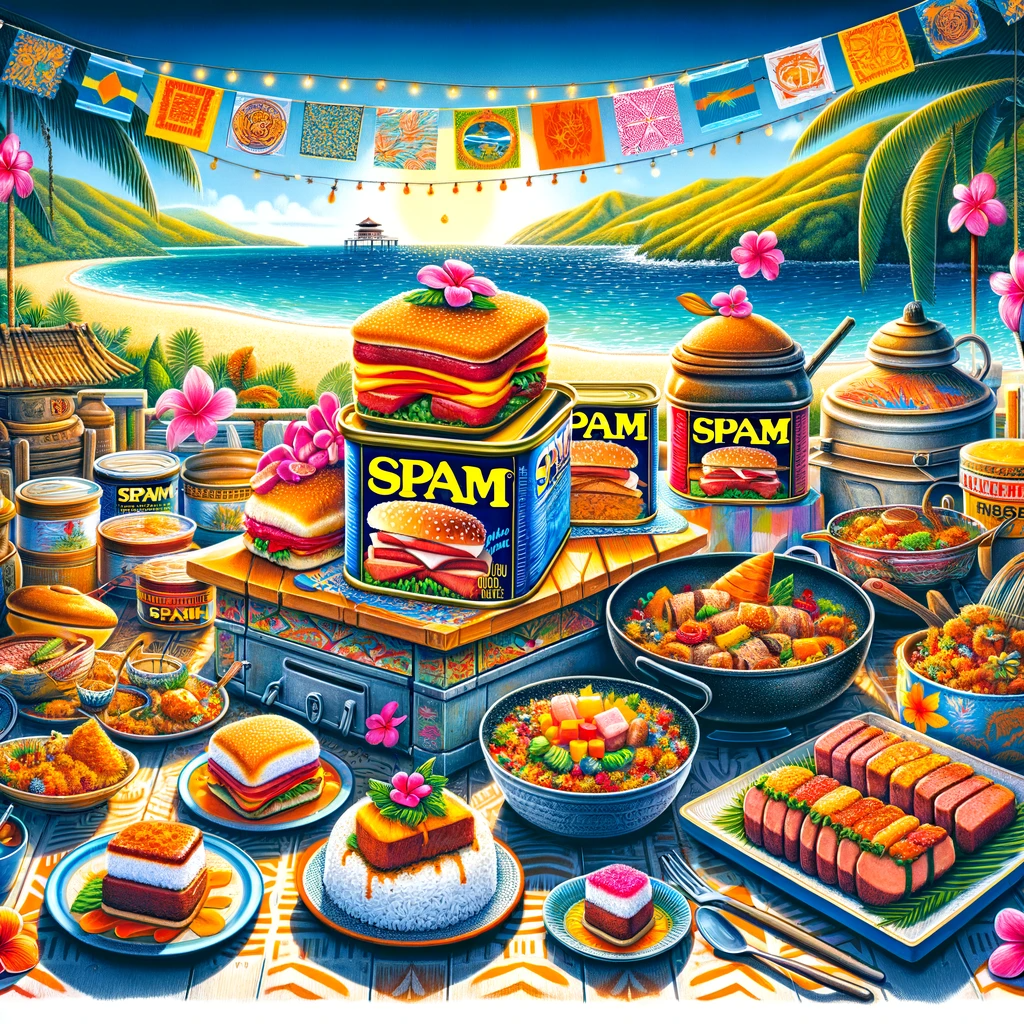Introduction to Spam’s Popularity in Oceania
Understanding Spam’s Place in Oceanian Food Culture
Spam’s prevalence in Oceanian cuisine is not merely a matter of taste—it reflects the region’s history and cultural adaptability. Much of Oceania, including its plethora of islands, embraced Spam post-World War II when it was introduced to the Pacific by American soldiers. The product’s versatility, long shelf life, and ease of preparation made it an ideal ingredient for the islanders. Over time, Spam has been interwoven into the fabric of Oceanian food culture, gaining acceptance across generations. It is a common ingredient in celebratory feasts and daily meals, showing a deep-rooted appreciation for this canned meat. The marriage of Spam with traditional recipes showcases the innovative spirit of Oceanian cuisine while highlighting the unique fusion of diverse cultural influences.
The Historical Significance of Spam in Oceania
How Spam Became a Staple in the Pacific Islands
Spam’s journey to becoming a Pacific Island staple is rooted in the aftermath of World War II. The logistical challenges of feeding soldiers had necessitated a food solution that was both non-perishable and easily transported. Spam filled this need perfectly. After the war, Spam’s surplus and continued supply to the islands laid the foundation for its incorporation into local diets. The abundance of this canned delicacy and its convenient preparation made it an appealing option when resources were scarce. As a result, Spam was adopted into various Oceanian dishes, securing its place as a beloved ingredient. The historical significance of Spam is thus intertwined with the resilience and adaptability of the islanders, encompassing a broader narrative of innovation in times of necessity.
Creative Culinary Uses of Spam in Oceania
Traditional and Modern Dishes Featuring Spam
Despite its simple origins, Spam has been creatively adopted into both traditional and modern dishes in Oceania. It’s featured in recipes as varied as the culturally iconic Spam musubi, a kind of sushi-roll-turned-local-delicacy in Hawaii, to Spam fried rice, a convenience meal that many Pacific Island families have embraced. In Guam and other Micronesian islands, Spam is often featured in celebratory menus and everyday fare, illustrating its versatility. The modern Oceanian kitchen continues to innovate, with chefs incorporating Spam into gourmet dishes and fusion recipes that marry Oceanian staples with global flavors. Whether served as part of a lavish feast or as a quick family meal, Spam has proven to be a flexible, unifying element of the region’s gastronomy.
Recipes and Ideas for Cooking with Spam
Resourcefulness is a hallmark of Oceanian cooking, with Spam lending itself to many recipes and ideas. From a simple dice and fry process that churns out crispy Spam bits perfect for breakfasts to more complex concoctions like Spam stews and soups where it serves as a hearty protein, the possibilities seem endless. Those looking for a quick snack can whip up a batch of Spam sliders, or for a homely touch, incorporate canned meat into a rich, savory quiche. For a truly island-inspired dish, mixing Spam into a vibrant poke bowl offers a delectable twist. With these recipes and more, Spam inspires cooks across Oceania to explore its potential, making it an indispensable part of their culinary arsenal.

Nutritional Profile of Spam
Understanding the Health Aspects of Spam
When it comes to the nutritional profile of Spam, it’s essential to approach it with balance and awareness. As a processed meat product, Spam is high in sodium and fat, which can be a concern if consumed in large amounts or as part of an unbalanced diet. Nonetheless, it offers a substantial amount of protein, making it an energy-rich food choice. It’s important for enthusiasts of Spam in Oceania to enjoy it in moderation, and within the context of a diverse diet that includes plenty of fresh fruits, vegetables, and whole grains. Understanding the health aspects of Spam allows islanders to maintain their cherished culinary traditions while making informed choices for their wellbeing.
Spam in Contemporary Oceanian Cuisine
Fusion Dishes and Innovative Uses of Spam Today
In contemporary Oceanian cuisine, Spam continues to push the envelope, finding its way into a myriad of fusion dishes that reflect the dynamic nature of modern island life. Young chefs and home cooks alike experiment with innovative uses of Spam, integrating it into everything from burgers with a Polynesian twist to spicy stir-fries that harmonize Asian and Islander flavors. Even pizza and pasta have been graced with its presence, demonstrating Spam’s ability to adapt and thrive in a globalized culinary landscape. The versatility of Spam in the kitchen ensures its ongoing popularity and its ability to meet modern tastes with a nostalgic nod to the past.
The Cultural Impact and Sentiment Around Spam
Why Spam Holds a Special Place in the Hearts of Oceanians
More than just a food item, Spam has become a symbol of resilience and a testament to the adaptability of Oceanian cultures. The nostalgic value and the emotional sentiment surrounding Spam, particularly for those who have inherited recipes handed down through generations, create a deeply personal connection to the product. Festivals such as Hawaii’s annual Spam Jam celebrate the concoction, attracting locals and tourists alike. The intergenerational transfer of Spam-related culinary practices reinforces its standing as more than a means of sustenance but as a vector of cultural heritage and identity. It’s clear that the rapport between Oceanians and Spam transcends the mere act of eating, imprinting it in the collective memory of the island inhabitants.

Preserving and Adapting the Tradition of Spam in Cooking
Balancing Tradition with New Culinary Trends
As Oceanian communities continue to grow and evolve, preserving the tradition of Spam while keeping pace with new culinary trends becomes a delicate balance. Identifying as both a comfort food and a culinary chameleon, Spam’s role in the regional cooking scene accommodates both the desire to maintain time-honored recipes and the curiosity for innovation. This equilibrist act manifests through chefs who reinvent classic dishes with contemporary techniques, or through families that incorporate healthier versions of Spam into their diets. As the culinary landscape expands, Spam remains a universal language of flavor, bridging the past with the present and future of Oceanian cuisine.
FAQs About Spam in Oceanian Cuisine
What is the Origin of Spam in Oceania?
The origin of Spam in Oceania can be traced back to World War II when the United States military provided canned Spam as part of the provisions for their forces stationed in the Pacific. This shelf-stable food not only fed the soldiers but also became integrated into the local island diets after the war, due to its convenience and long shelf life. Its introduction during this period laid the foundation for Spam’s popularity in Oceanian cuisine, where it assumed an important role as a versatile and affordable source of protein.
How Nutritious is Spam?
Spam’s nutritional value is a topic of discussion for many health-conscious consumers. As a processed meat product, Spam is high in sodium and saturated fats, which should be consumed in moderation. However, it also provides a good amount of protein and can be a part of a diverse and balanced diet when coupled with healthier food choices. Consumers concerned about the nutritional aspects of Spam are encouraged to consider lower-sodium varieties and to incorporate plenty of vegetables, fruits, and grains in their meals.
What are the Best Ways to Cook with Spam?
Cooking with Spam offers a wide array of possibilities that appeal to both traditional and contemporary tastes. Popular methods include slicing and frying it to create a crispy exterior, which makes it an excellent addition to breakfast plates, or dicing it for inclusion in stews, sandwiches, and salads. Spam also lends itself well to grilling and baking, and can be incorporated into a variety of dishes including stir-fries, pastas, and even sushi rolls like the Hawaiian favorite, Spam musubi. The versatility of Spam encourages cooks to experiment and find the preparation method that best suits their taste and culinary style.
Are There Healthier Versions of Spam Available?
For those looking for a healthier alternative, manufacturers have responded to consumer demand by offering lower-sodium and reduced-fat versions of Spam. These alternatives provide a way for individuals to enjoy the familiar taste of Spam while managing their sodium and fat intake. Despite these healthier options, it’s still recommended to consume Spam in moderation as part of a well-balanced diet rich in whole foods and nutrients. As with all processed foods, reading nutritional labels and making informed choices is key to maintaining a healthy lifestyle while indulging in this Oceanian staple.
How Has Spam Influenced Oceanian Food Culture?
Spam has profoundly influenced Oceanian food culture, becoming much more than a simple canned product. It has been embraced by various Pacific communities, shaping the food landscape and becoming a symbol of provision and culinary ingenuity. The adaptability of Spam has led to its incorporation into a range of traditional dishes, reflecting the region’s history and cultural identity. The presence of Spam at feasts and family meals alike demonstrates its cultural significance and how it has woven itself into the social fabric of Oceanian life, fostering a unique culinary heritage that continues to evolve and thrive.
